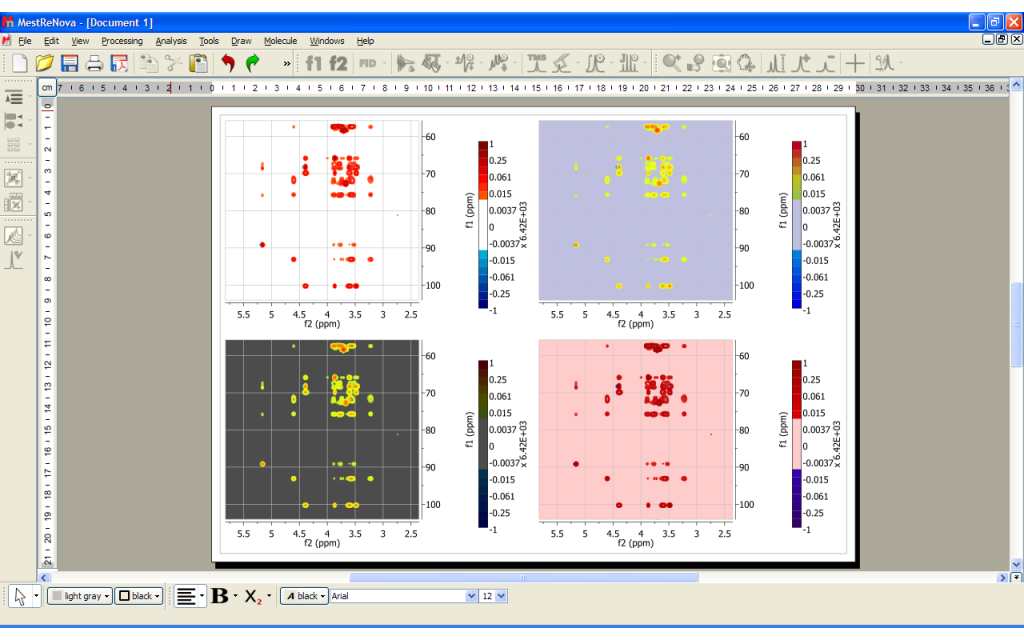

#Deltagraph stacked plots how to#
It serves as an in-depth, guide that'll teach you everything you need to know about Pandas and Matplotlib, including how to construct plot types that aren't built into the library itself.ĭata Visualization in Python, a book for beginner to intermediate Python developers, guides you through simple data manipulation with Pandas, cover core plotting libraries like Matplotlib and Seaborn, and show you how to take advantage of declarative and experimental libraries like Altair. ✅ Updated with bonus resources and guidesĭata Visualization in Python with Matplotlib and Pandas is a book designed to take absolute beginners to Pandas and Matplotlib, with basic Python knowledge, and allow them to build a strong foundation for advanced work with theses libraries - from simple plots to animated 3D plots with interactive buttons.
#Deltagraph stacked plots for free#
✅ Updated regularly for free (latest update in April 2021) ✅ 30-day no-question money-back guarantee

The lineplot() function can natively recognize wide-form datasets and plots them accordingly. Now that we're working with a wide-form dataset, all we have to do to plot it is: sns.lineplot(data=df_wide) Great! Our dataset is now correctly formatted for wide-form visualization, with the central tendency of the stays_in_week_nights calculated. Let's take a look at how our dataset looks like now: arrival_date_year 2015 2016 2017 Finally, we've used reindex() to enforce the same order of arrival months as we had before. Then, to turn the narrow-form data into a wide-form, we've pivoted the table around the arrival_date_month feature, turning arrival_date_year into columns, and stays_in_week_nights into values. Then, we've saved the order of arrival date months so we can preserve it for later. Here, we've firstly truncated the dataset to a few relevant columns. # Reindex the DataFrame with the `order` variable to keep the same order of months as beforeĭf_wide = df_wide.reindex(order, axis= 0) # Pivot the table to turn it into wide-formĭf_wide = df.pivot_table(index= 'arrival_date_month', columns= 'arrival_date_year', values= 'stays_in_week_nights') Since the dataset isn't well-suited for this by default, we'll have to do some data pre-processing on it.

This will result in a Line Plot for each year, over the months, on a single figure. We'll want to visualize the stays_in_week_nights variable over the months, but we'll also want to take the year of that arrival into consideration. Now, let's take a look at how we can plot wide-form data, rather than tidy-form as we've been doing so far.

In general, people stay ~2.8 days on weeknights, in July, but the confidence interval spans from 2.78-2.84. Of course, we'll have to specify which dataset we're working with by assigning the dataframe to the data argument. Then, we can assign the x and y arguments of the lineplot() function as the names of the columns in that dataframe. We've used Pandas to read in the CSV data and pack it into a DataFrame. Sns.lineplot(x = "arrival_date_month", y = "stays_in_week_nights", data = df) For example, let's explore this dataset, by using the arrival_date_month as our categorical X-axis, while we use the stays_in_week_nights as our numerical Y-axis: import matplotlib.pyplot as plt This is a truncated view, since there are a lot of columns in this dataset. Let's take a look at the columns of this dataset: hotel is_canceled reservation_status. Let's use the Hotel Bookings dataset and use the data from there: import pandas as pd Let's import a dataset and work with it instead. We work with data imported from larger datasets or pulled directly from databases. However, more typically, we don't work with simple, hand-made lists like this. The x list acts as our categorical variable list, while the y list acts as the numerical variable list. Here, we have two lists of values, x and y. Let's start out with the most basic form of populating data for a Line Plot, by providing a couple of lists for the X-axis and Y-axis to the lineplot() function: import matplotlib.pyplot as plt They can typically be used in much the same way Bar Plots can be used, though, they're more commonly used to keep track of changes over time. Line Plots display numerical values on one axis, and categorical values on the other. In this tutorial, we'll take a look at how to plot a Line Plot in Seaborn - one of the most basic types of plots. It offers a simple, intuitive, yet highly customizable API for data visualization. Seaborn is one of the most widely used data visualization libraries in Python, as an extension to Matplotlib.


 0 kommentar(er)
0 kommentar(er)
